
Flea, Tick & Wormers
Fleas can be very unpleasant for both your dog and your home, and OlliePets offers several trusted products for dog flea treatment. For complete flea control, it’s recommended that your dog is treated every four to eight weeks.
Having unwanted guests in your home and on your pet is never a pleasant experience, so it’s a good idea to know not only how to protect against them but also how to stop them coming back. Unfortunately, there are a few different kinds of pesky parasites that are pretty common, so read on to find out a bit more about them and what you can do to help protect your pet from them.
Fleas
Small parasites that live on your pet’s body and survive on their blood, it’s easy for your pet to get fleas if you don’t protect them against them. Unlike human nits that can’t survive without living on the scalp, fleas can survive out of your pet’s coat which means they can infest your home too – not a nice thought!
While fleas are difficult to notice in their infant stage, they’re easier to spot as adults – by the time you can see them it could be too late though. Common indications of fleas will come from your pet’s behaviour, including scratching or biting at their skin. If your pet’s doing this a lot, make sure you give them a good check to see if there are fleas, but prevention is the best cure when it comes to these pesky little things.

Ticks
Ticks actually belong to the spider family, and are another blood-sucking parasite that happily attach themselves to your pet’s body for a good meal. Unlike fleas, ticks latch onto a single place on your pet’s skin and begin to suck their blood, so it’s not a nice thing for your pet to experience.
They can be very dangerous too, as ticks often carry diseases like Lyme disease which can be fatal to both you and your pet. It’s less likely that your pet will suffer from a tick problem compared to fleas or worms, but it’s a good idea to keep an eye out for them when you’re grooming or just stroking them. It can be tricky to get rid of ticks, as they need to be removed carefully, but you can also use medications and shampoos to combat them.
Worms
There are quite a few different types of worm that can affect your pet, and as some of them can be deadly, you need to protect your pet from getting them. The most common type of worms that affect pets are tapeworms and roundworms, but they don’t usually have very obvious symptoms for you to spot.
Despite the lack of clear signs, worms such as lungworms can do serious damage to your pet, so it’s really important that you stick to a regular worming routine. You can discuss this with your vet. It’s still a good idea to keep an eye out for potential worms though, with symptoms including loose droppings or droppings containing blood, weight loss and loss of shine in your pet’s coat. And although it’s not exactly the most fun thing you can do for your pet, checking their poo for worms is something they’ll be really grateful for if you spot a problem.
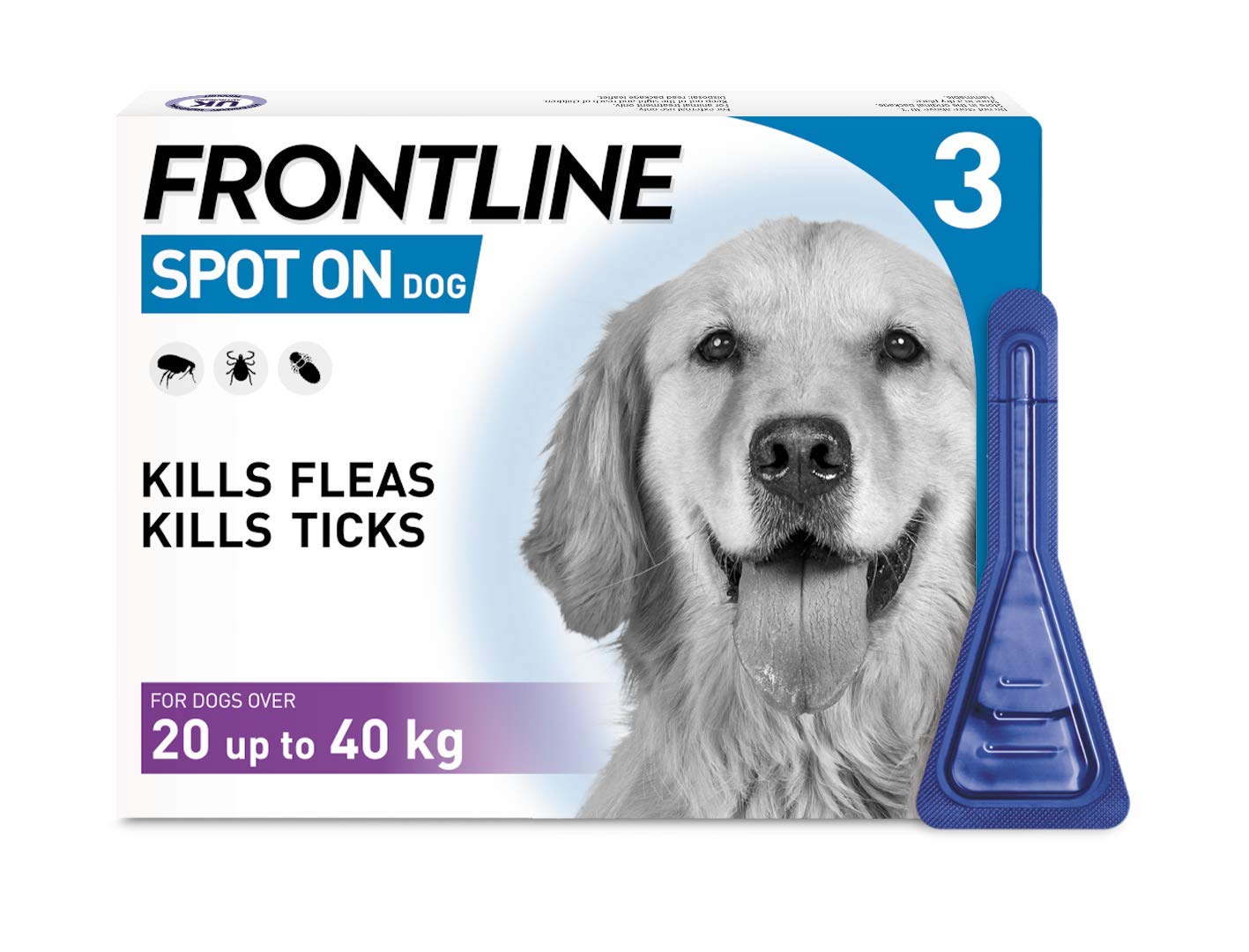
Large Dog 20-40kg (3 Pipettes)
FRONTLINE
£19.99

Indorex Flea Spray (500ml)
Virbac
£22.45
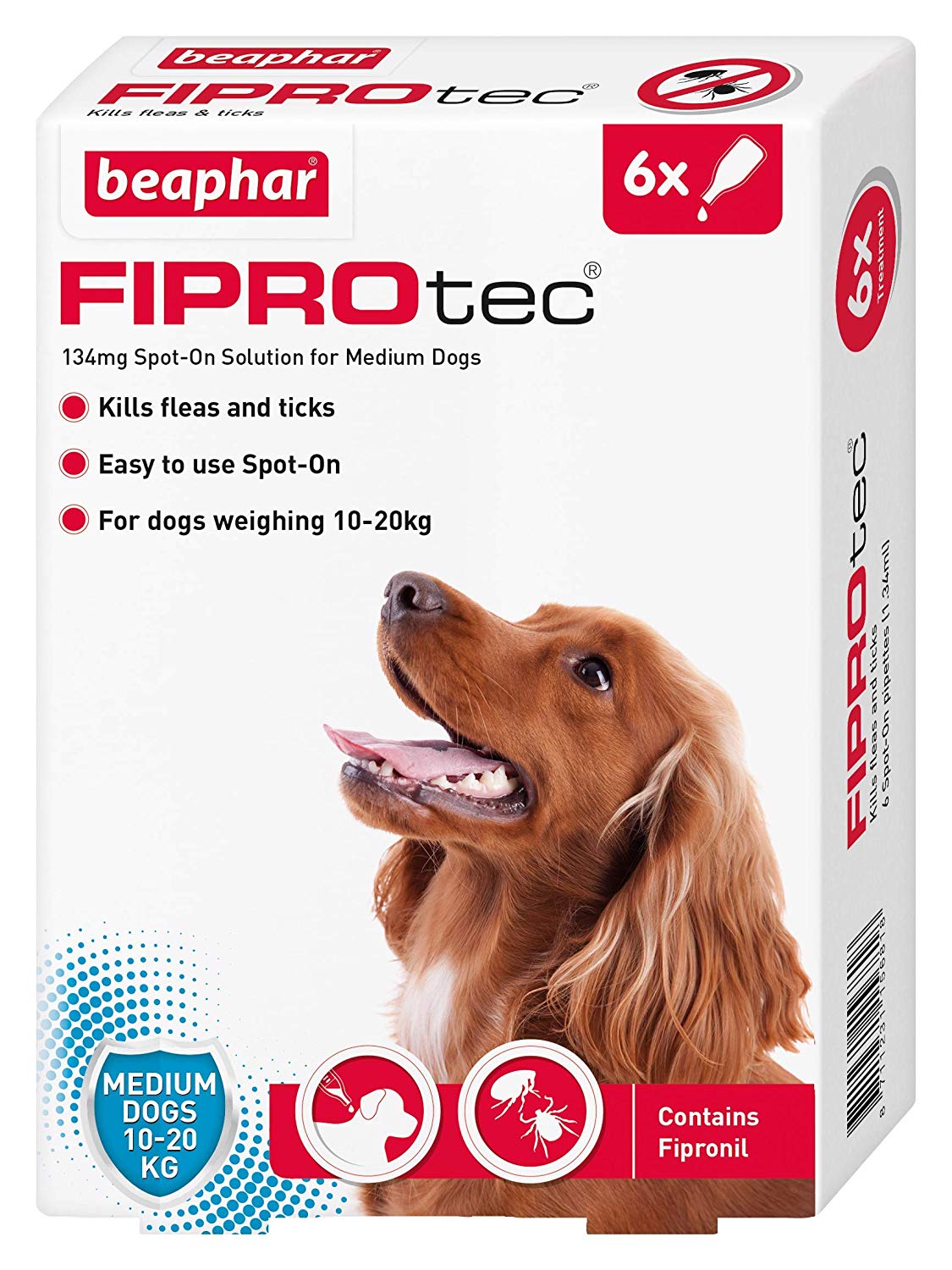
Fiprotec Spot (6 Pipettes)
Beaphar
£11.17
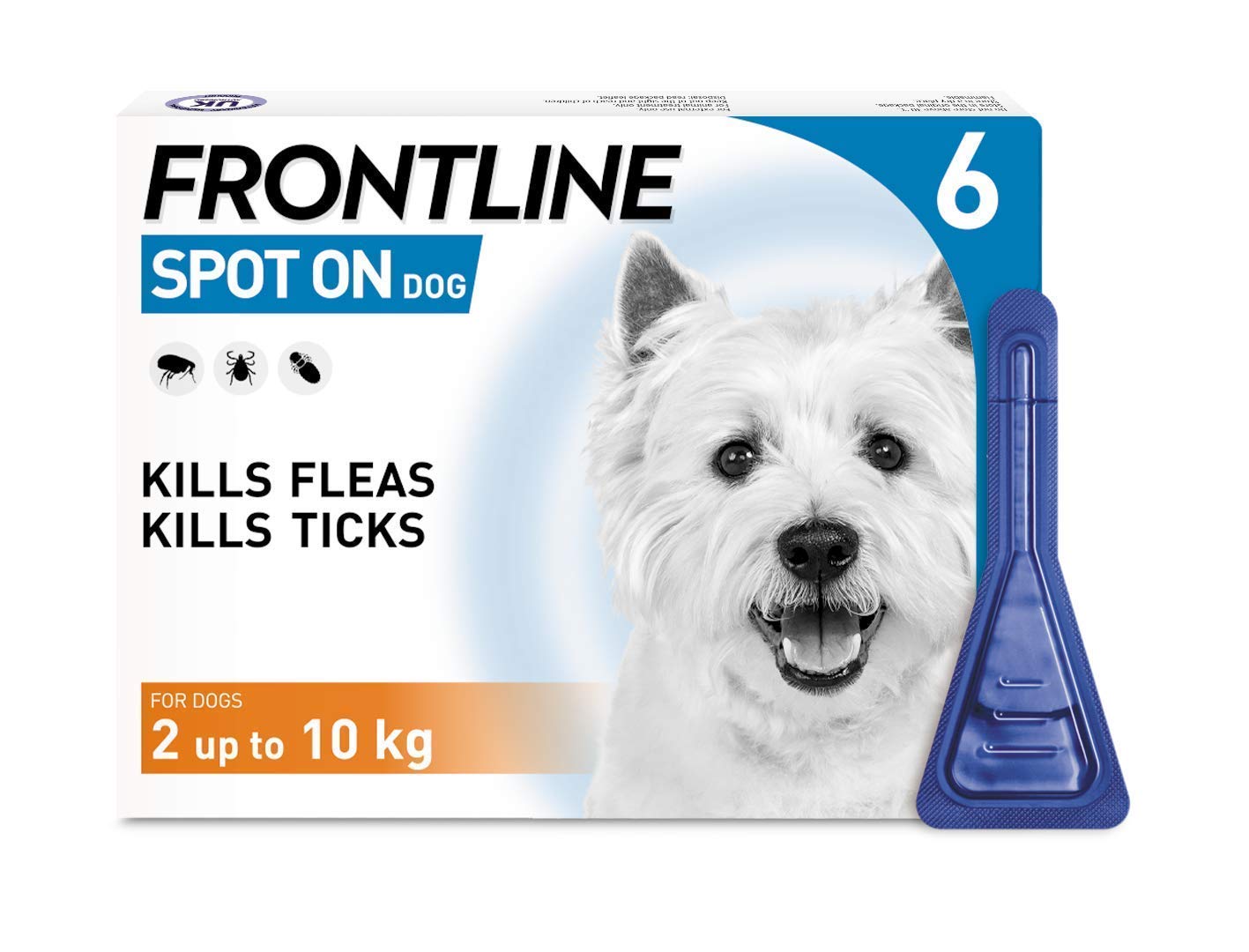
Small Dog 2-10kg (3 Pipettes)
FRONTLINE
£25.99
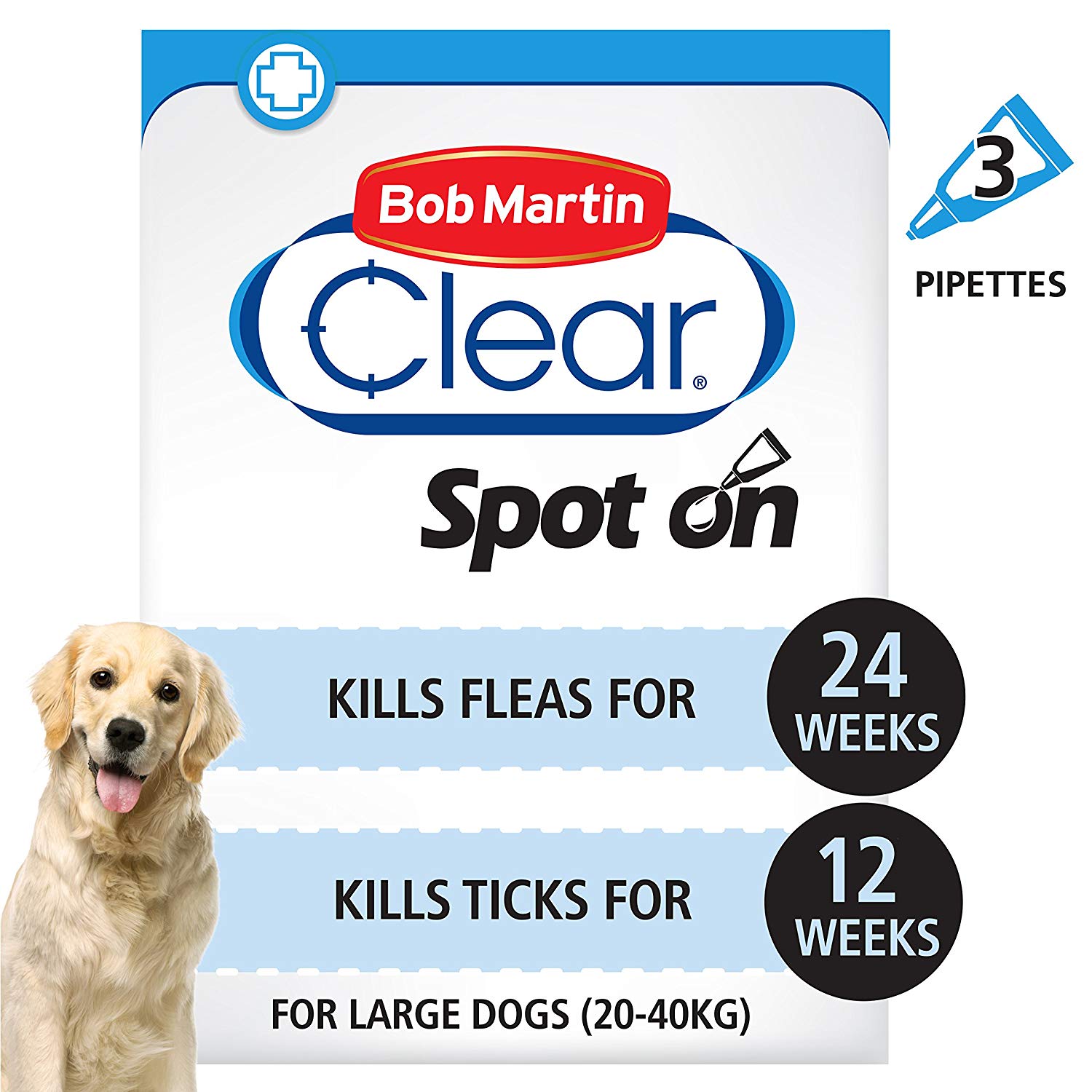
Large Dog 20-40kg (3 Pipettes)
Bob Martin
£11.99
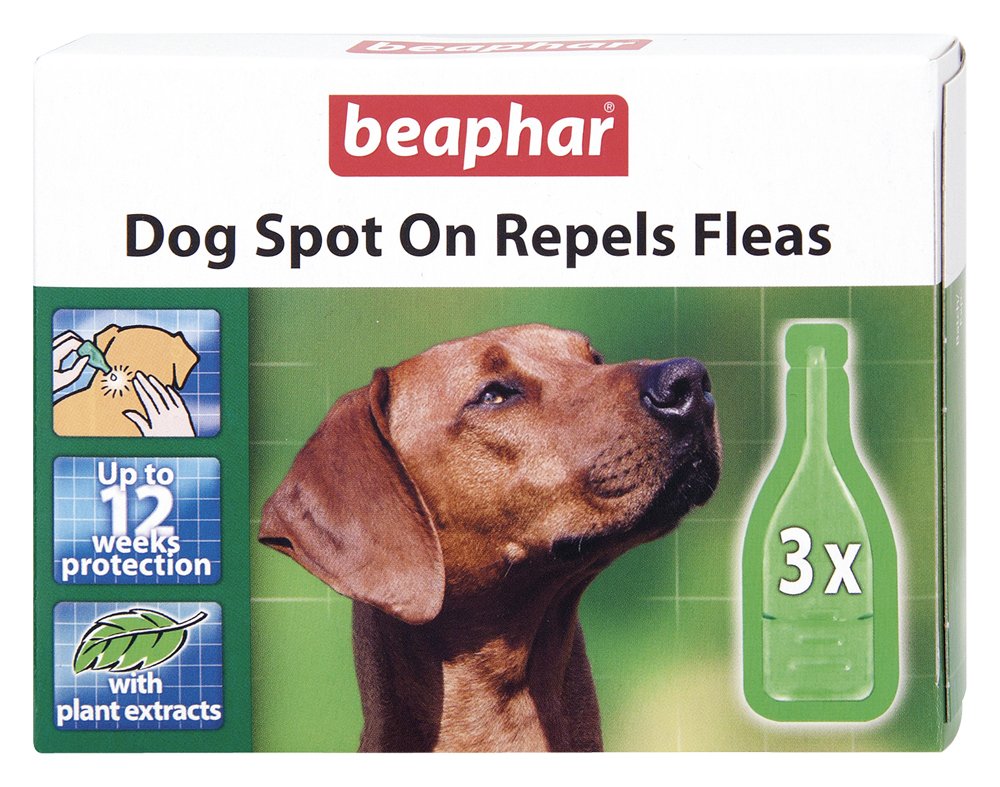
Spot-On Repels Fleas (3 Pipettes)
Beaphar
£3.99
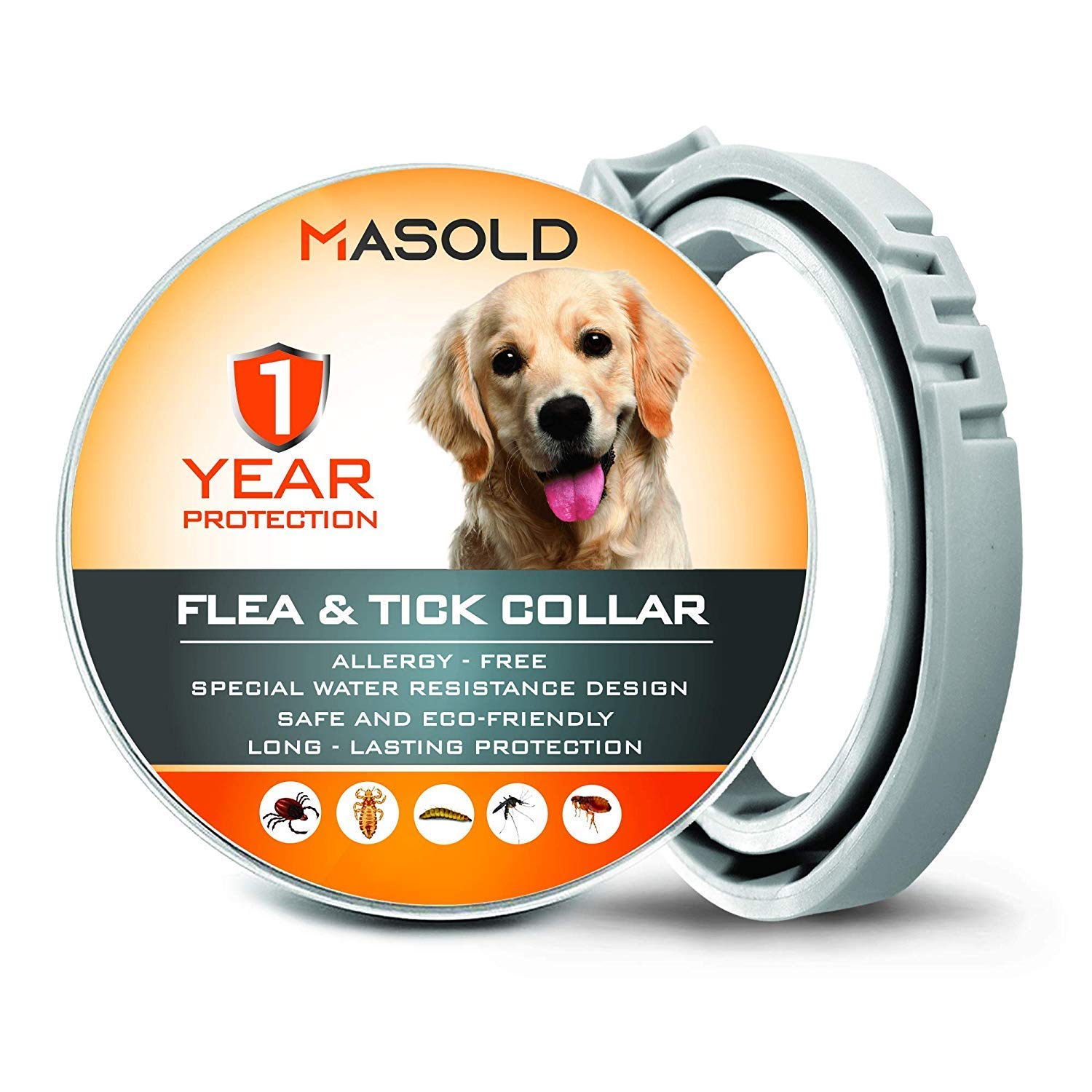
Flea and Tick Control Collar
MASOLD
£14.95
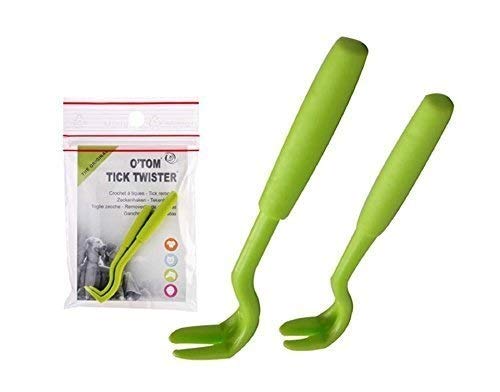
Tick Twister Remover (x2)
O’tom
£2.99
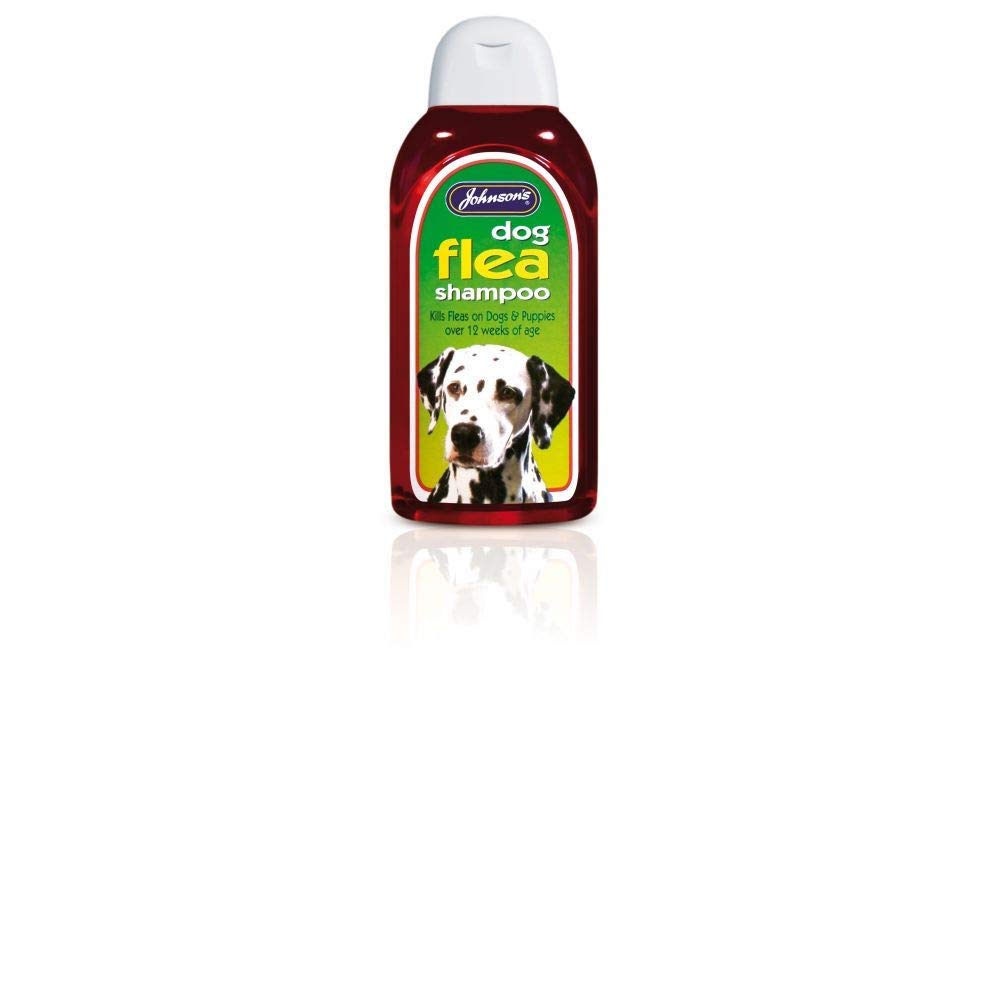
Insecticidal Shampoo (400 ml)
JVP
£5.75
Types of treatment
There are many different treatment options for you to consider, and while certain ones will work for some pets, you need to find something that’s right for you and your own pet to keep them in tip-top shape.
Topical treatments

These topical treatments are popular because they’re usually easy to apply and affordable, they also come in many varieties.
- Spot on treatments
- Shampoos
- Powders
These treatments are great for preventing and treating fleas and ticks, as they’re long-lasting and will kill them off at any stage of their life. Plus, spot on treatments – which sometimes can help prevent worms too – only take a moment to apply to your pet, so it’s really easy to keep on top of your routine.
Pills
Pills can be used for the treatment of fleas, ticks and most commonly worms, which they help to quickly flush out of your pet’s system. As it’s very common for pets to struggle with taking a tablet, you might need to hide it in some food or a treat to help the medicine go down. If you’re going to give your pet any tablet, you’ll usually need to weigh them to establish the right dosage.
Collars
Flea and tick collars can’t help to protect your pet from worms and are not as effective as topical or oral treatments. They come in all different styles and can last up to eight months, plus they can be great if your pet really doesn’t like bath time.
Preventing infestations
As with most problems that you can encounter with your pet, it’s always best to try and prevent them rather than react once it’s too late, so here we look at some of the most popular pets and what you can do keep them clear of fleas, ticks and worms.
For dogs
Your dog is most likely to pick up these unwanted little creatures when you’re out walking, particularly in areas with long grass. Treatments can come in many forms, from tablets to spot on treatments and even shampoos, so there are plenty of options for finding the best options for your pet. You should treat your dog for fleas, you can help to keep your pet safe in your garden by getting rid of any fallen leaves and keeping any bushes and hedges trimmed.
For cats
Like dogs, your cat can easily pick up fleas, ticks and worms and, as you can’t see what your pet gets up to if they’re allowed to roam outside, this means it’s really important that you stay on top of treating them. Use a spot on flea treatment every 2-3 months, to keep your pet in great shape for their outdoor adventures.
How to treat and prevent dog fleas
If your dog has or has ever had fleas, you’ll know how much of a problem they can be. Fleas can find their way onto the cleanest dogs and into the most well-cared-for homes, and getting rid of them once they’re there can feel like a nightmare.
Whether you’re a new dog owner or you’re concerned about your long-term companion, there are a couple of things you can do to ensure you never need to deal with dog fleas on your pet and in your home. If your dog already has fleas, follow the steps in this guide to deal with them quickly.

Understanding where dog fleas come from
Dogs can pick up fleas from other animals or from an infested environment while they’re out walking. Fleas can jump from their host or environment onto your dog, so the infestation can spread quickly even without full contact.
How to check if your dog has fleas
To check if your dog has fleas, look closely at their coat – dog fleas are usually 1-2mm long and are dark brown in colour. If you can’t see any fleas on your dog, that doesn’t mean they aren’t there. Flea dirt – black specks on your pet’s coat – is often easier to spot than the fleas themselves. If you’re unsure, don’t hesitate to take your pet to your local vet for some advice you can trust.
How to treat dog fleas
If you’re sure your dog has fleas, you need to act quickly to ensure they don’t spread, and to make sure the skin isn’t irritated further.
- Use a flea treatment – if you’re unsure, ask your vet for a recommendation on which treatment to use
- Over the next few days, gently comb your dog’s fur with a flea comb – if you come across any fleas or eggs, drown these in a dish of soapy water before you continue
There are several types of flea treatment which you might consider using, though spot-on treatments are preferred by most.
Types of dog flea treatment
The most popular types of over-the-counter flea treatments include:
- Spot-on treatments
- Collars
- Tablets
If you aren’t sure which flea treatment is best for your dog, enquire at your local vet.
Preventing dog fleas
How often should you treat your dog for fleas?
The best way to ensure your dog is flea-free is to prevent them before they strike. It’s crucial that you treat your dog for fleas monthly, whether they have fleas or not. Giving your dog regular flea treatments is the best way to prevent problems further down the line.
How to remove dog fleas from your home
No owner wants to think about their pet suffering with fleas – the itchy, intrusive parasites cause dogs a lot of pain and discomfort, and need to be dealt with as quickly as possible once you’ve spotted them. But did you know, if your dog has or has recently had fleas, the problem might have spread into your home? There are simple ways to prevent dog fleas from taking hold, but if you’ve let things slip or you’ve adopted a new pet who you think has fleas, it’s crucial that you treat your home for the infestation as soon as you’ve taken care of your pet.

Understanding Dog Fleas
The first step in dealing with the issue is understanding it – getting to grips with what dog fleas are and how they spread can help you stop the infestation from spreading and remove it efficiently from your home.
Can dog fleas live on humans?
Fleas don’t live on humans, but they can still bite! Human flea bites will be incidental, the result of fleas on your pet or in your home.
Can dog fleas bite humans?
Dog fleas can bite humans. This is usually the result of a pet being infected – when your dog is infected with fleas, they can transfer the parasites onto you or into the furnishings of your home.
How to remove dog fleas from your house
If your dog has fleas, there’s a chance they’ve been passed into your soft furnishings, like carpets, curtains, and bedding. If this has happened, you’ll need to take steps to remove the live fleas as well as safeguarding against any future problems which can come from flea larvae and unhatched eggs.
Don’t forget to treat your pet before your home – when you’re ready, follow these steps to get rid of any fleas in your house.
- Vacuum
- Wash pet bedding
- Wash soft furnishings
- Spray your entire home including soft furnishings
Vacuum carpets to remove fleas, eggs, and larvae
Whether you’re trying to remove fleas or reduce the chance of a future flea infestation, the best place to start is with the vacuum cleaner. Vacuum your carpets and floorboards vigorously to unstick any fleas, flea eggs, and larvae that might be tucked away. The warmth and vibration from the vacuum cleaner will encourage the pupae to hatch and bring any eggs to the surface of the fibers – repeat this step regularly to ensure a flea-free home.
Wash your dog’s bedding
If your dog has had fleas, it’s likely there are some eggs, pupae and larvae still hiding in their bedding. To stop the new infestation from hatching, it’s best to replace the bedding or to wash it on a hot wash.
Wash soft furnishings
After you’ve washed your dog’s bedding, hot wash any of your own soft furnishings, like cushion covers, blankets, and bedding, that your pet may have been in contact with.
Spray your home with a flea spray
To help treat the infestation, a household flea spray can be used. Every room in the house should be treated following manufacturer’s instructions.
Preventing dog fleas
Eliminating a dog flea infestation from your pet and home is a lot of work, and certainly not how you want to spend time with your pet. Luckily, dog fleas are easy to prevent with regular monthly treatments. Don’t wait until your dog has fleas to treat them for the problem, apply a flea treatment each month and ensure your pet is always flea-free and comfortable.
Our Subscribe and Save programme is designed to take the pressure off. You can save money on monthly flea treatments, and have them delivered straight to your front door, so you can focus on enjoying the time you have with your dog.





